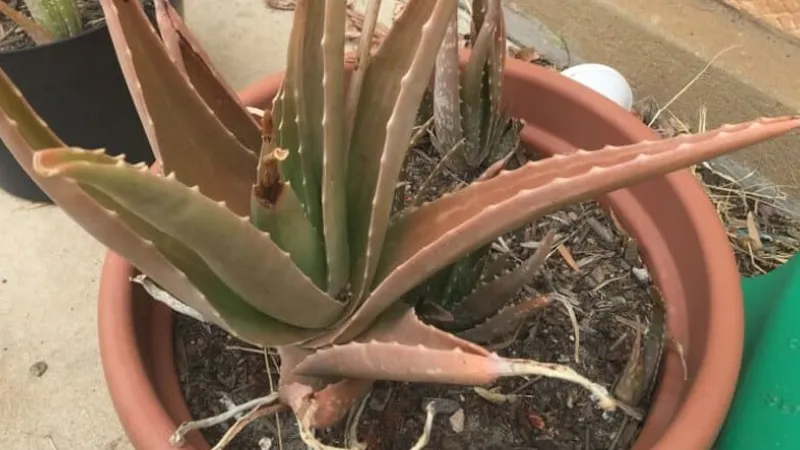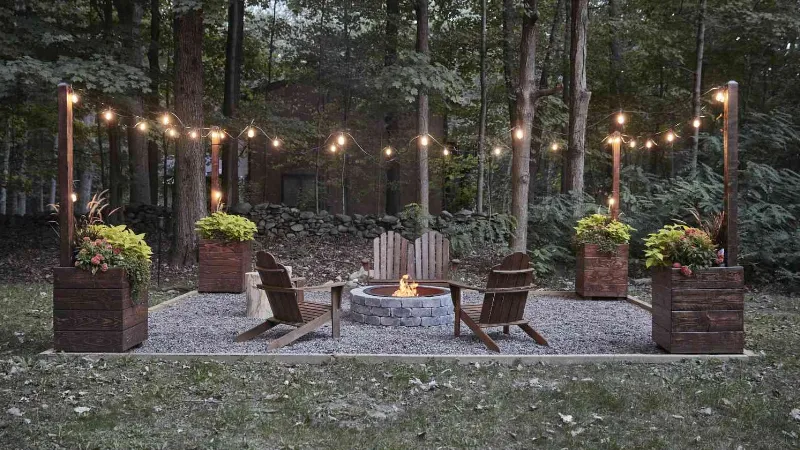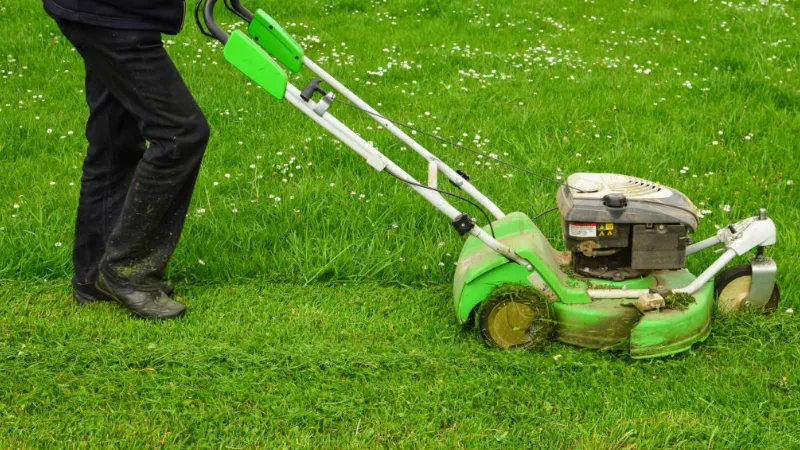We will not only describe the causes of your “aloe plant is turning brown” but also how you can swiftly and successfully resolve the problem. You can support your little succulent’s growth by adhering to the fundamental guidelines provided below!
Why your aloe plant is turning brown? Probably because of overwatering, underwatering, sudden environment changes, excessive heat, too cold, improper light exposure, disease, poor drainage, too much fertilizer, transplant shock, and frost damage.
Please read on for more detailed information.
Why Your Aloe Plant is Turning Brown?
The following are the three most common reasons why Aloe Vera is turning brown:
Overwatering
Your Aloe Vera leaf is turning brown? The most frequent cause is undoubtedly overwatering. This indoor plant prefers dry soil because it is a succulent.
If you notice that the leaves have turned brown or yellow in color, rather than their natural shade of green, there is a good chance that the plant is overwatered, or the soil is holding too much moisture.
- How to Prevent This Issue
Wait until the soil is completely dry between waterings to prevent overwatering your aloe vera plant. Prior to giving your Aloe plant another watering, the soil should ideally be 75% dry.
Aloe Vera plants, like the majority of succulents, are indigenous to dry, arid regions, making them extremely drought tolerant. If you are ever unsure whether to water your aloe vera plant, it is better to wait a few days than to run the risk of overwatering it.
Making sure you are using the right pot and soil mixture, in addition to adhering to the right watering schedule, will help prevent your aloe plant’s leaves from turning brown from too much moisture.
It is crucial that you select a soil mixture that is suitable for succulents because the soil needs to be well-draining. These soil mixtures are made to allow moisture to pass through them, not stick to the soil and collect around the roots. Additionally, the pot you select should have a drainage hole, as this will permit extra water to drain through the pot’s base.
- How to Repair Brown Leaves Caused by Excess Moisture
You can solve the issue by repotting your aloe vera plant if you discover that the soil is waterlogged and you are unable to fix it by letting it dry out for a few days. To do this, remove the plant from the existing pot by gently turning it upside down.
Remove as much of the wet soil as you can from the plant’s root ball. Examine the roots for evidence of root rot and remove any that appear dark and soggy. Replant your Aloe Vera plant now in a new location with better soil that drains well and is rich in coarse, porous materials like sand and pumice.
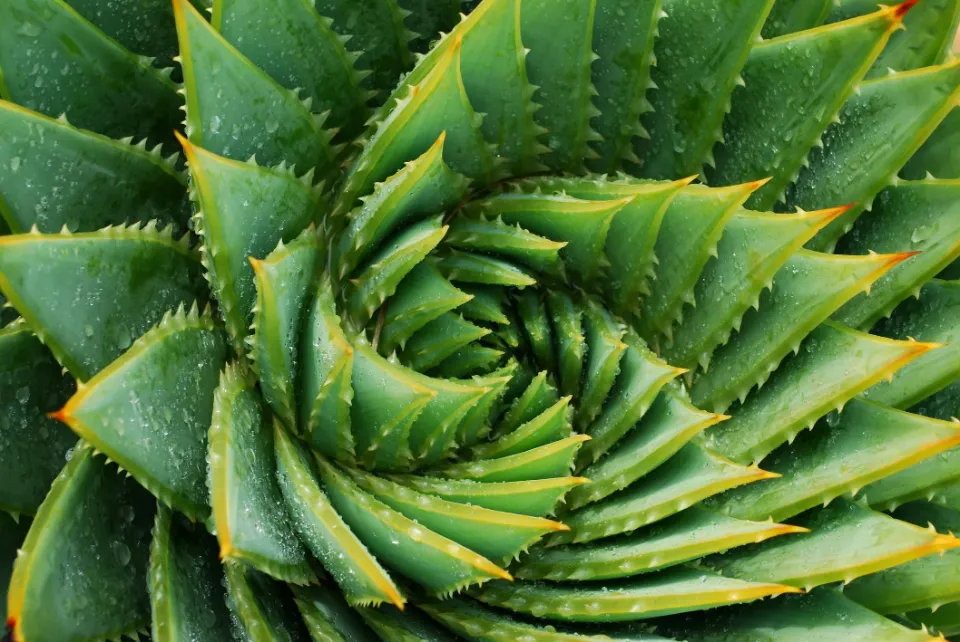
Underwatering
Generally speaking, it is better to under-water succulent plants than it is to overwater them. On the other hand, brown leaf tips on your aloe vera plant are a sign that it’s not getting enough water.
Over time, the leaves will thicken and harden and the brown tips will begin to spread down the length of the plant. The leaves on your aloe plant might appear shriveled and shrunken.
- Water Your Aloe When The Soil Is Dry
Whenever the soil feels dry, don’t forget to water your aloe plant. Water it completely and thoroughly until the water drains out of the drain hole at the bottom of the pot. Your aloe plant should be able to survive and grow with this amount of water.
Don’t water your plant again until the soil is completely dry after letting all of the extra water drain out of the pot. In order to ascertain whether there are any other problems affecting your plant in addition to infrequent watering, you may need to examine temperature, humidity, and amount of light if your aloe plant requires more frequent watering than it typically would.
Sudden Environment Changes
If you’re familiar with the popular “Polar Bear Plunge” events that happen during the winter months, you will understand my point quite easily. For those of you who are new to the Polar Bear Plunge”people sign up to plunge into a freezing cold body of water during the dead of winter while sporting bathing suits.
The participants’ expressions perfectly convey their stories. Your heart will race just watching the complete shock on their faces as they change from robes to bathing suits, usually in the snow, and then run or jump into an outdoor body of water.
Imagine your aloe plant right now. Throughout most of the year, it has been enjoying life indoors. Then, one day, BAM! You take it outside in the summer sun with no warning or explanation.
Similar to jumping into the frigid water, a sudden change in environment can cause your aloe to go into shock. The drastic change in temperature and light intensity can cause the leaves to become “sunburned”.
Without a period of acclimatization, aloe leaves will turn brown, red, or even gray when exposed to the elements. Over the course of 7 to 10 days, you gradually increase the amount of sunlight your plant receives, starting in the complete shade and ending in a location that receives bright, filtered sunlight. This process is known as acclimatization. How much sun do aloe vera plants need?
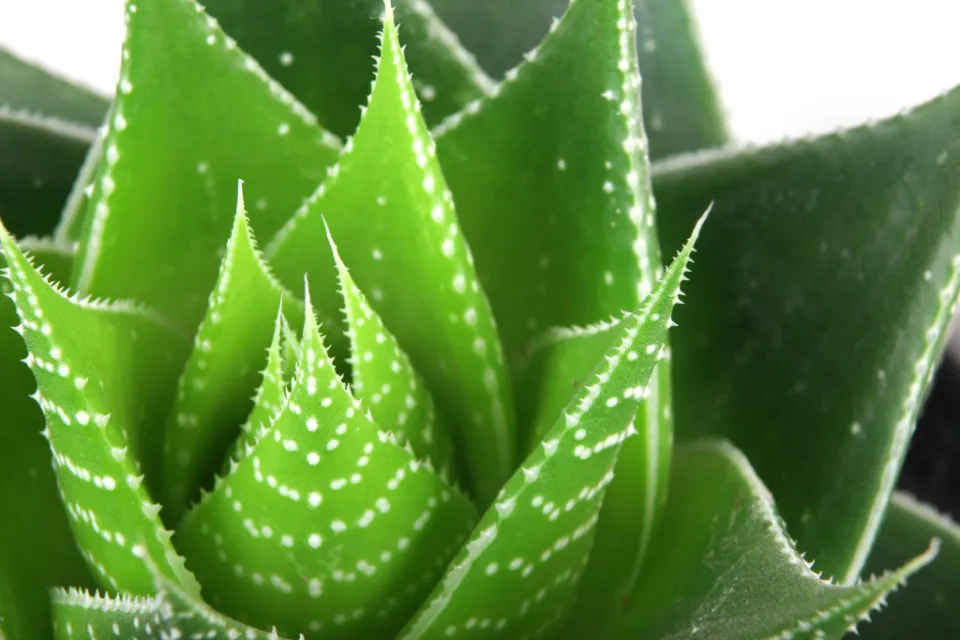
Excessive Heat
Sudden temperature changes and intense heat have the potential to shock aloe vera plants. During the summer, if you move your aloe plant from indoors to outdoors, you might notice that the leaves start to turn brown from the shock of being suddenly exposed to heat.
Aloe plants thrive between 55 and 80 degrees Fahrenheit, despite being native to the desert. Your aloe plant can suffer damage from higher temperatures, especially when they last for an extended period of time. Complicating matters is the possibility that it will dry out too quickly or get sunburned.
- Acclimate Your Aloe Plant To The Outdoors
You must gradually acclimate your aloe to outdoor temperatures to prevent shock or heat damage. To give it some time to get used to being outside, move it to a cool, shaded area at first. Start by exposing your plant for a few hours at a time to warmer or brighter environments.
If you find that the outdoors is too much for your aloe plant, simply bring it inside and let it recover. Summer heat may still be too much for it, and direct sunlight may burn it.
Too Cold
The leaves will start to droop and turn yellow when your aloe is experiencing cold shock. Brown will eventually move from the top of the leaves to the plant’s base. The leaves closest to the cold source will be lost first. If left untreated, the entire plant will die from the cold or from cold shock.
- Keep Aloe Plants Warm
Aloe plants prefer temperatures between 55 and 80 degrees Fahrenheit, which is similar to human comfort levels. Your aloe plant could become too cold or experience shock if the temperature falls below 55°F or if it suddenly changes.
Keep your aloe plant warm! It should be kept away from sudden cold drafts of air and in temperatures greater than 55°F.
Keep your aloe plant away from heaters, fans, windows, and other places where cold drafts might come in contact with it. You’ll want to keep your aloe away from any exterior doors during the fall and winter when cold drafts happen frequently. Your plant’s health will benefit greatly from a little protection.
Put some straw or other insulation around the base of your plant if you live in a growing region where aloe plants can overwinter outdoors to prevent it from freezing in the winter.
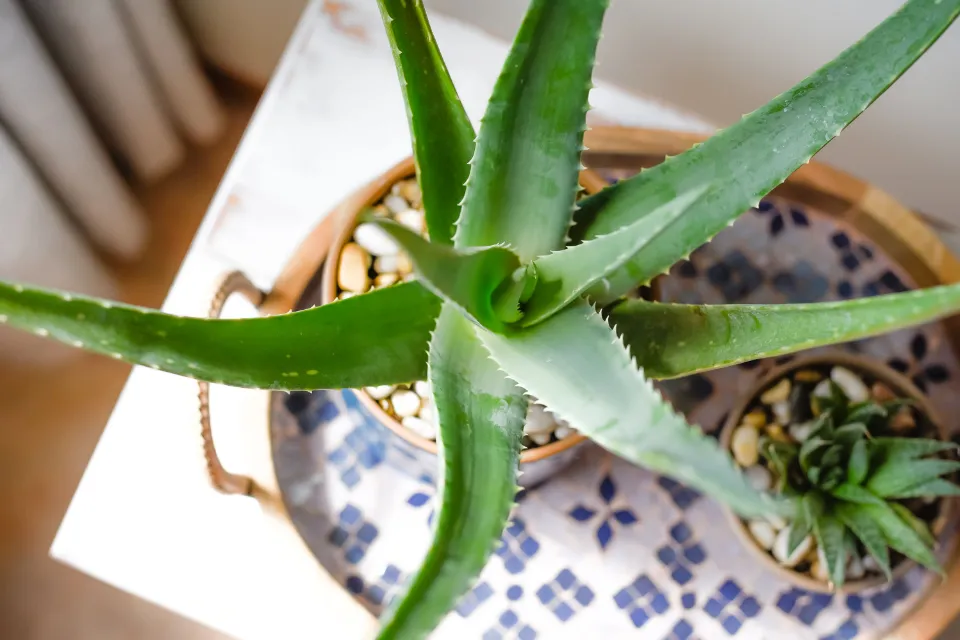
Improper Light Exposure
Over exposure exposure to direct sunlight is another common reason for Aloe Vera leaves leaves… direct sunlight. Although the plant’s untamed, desert-like appearance might lead you to believe it would thrive in the sun, too much light can actually burn the leaves.
- How to Avoid This Issue
It is important to place your aloe vera plant in an area with plenty of indirect sunlight if you don’t want the leaves to burn and turn brown. Instead of putting your plant on the windowsill, think about putting it a few feet away from the window. The plant will grow better if it is kept out of the sun and in a well-lit area with plenty of natural light.
- What to do About Scorched Leaves
Luckily, this issue is fairly easy to correct. To avoid sitting in the path of direct sunlight, simply move your aloe vera plant. If you’re lucky, this will not only stop further leaf burn, but the leaves will also heal naturally and turn back green.
Disease
Your aloe vera plant could get brown leaf spots from leaf diseases such as:
- Aloe vera anthracnose disease
- Aloe vera leaf spot disease
- Cladosporium leaf spot
- Leaf spot and leaf blight disease
Overwatering is frequently the cause of these fungi diseases. You can attempt to prune away the diseased leaves and reduce watering, although the outcome for these infected plants is not great. You might only need to replace your plant.
You should be careful not to overwater the plant to avoid these diseases. To avoid wetting the plant, only water at the plant’s base and into the soil, never from above. Also, water early in the morning so the water can evaporate during the day.
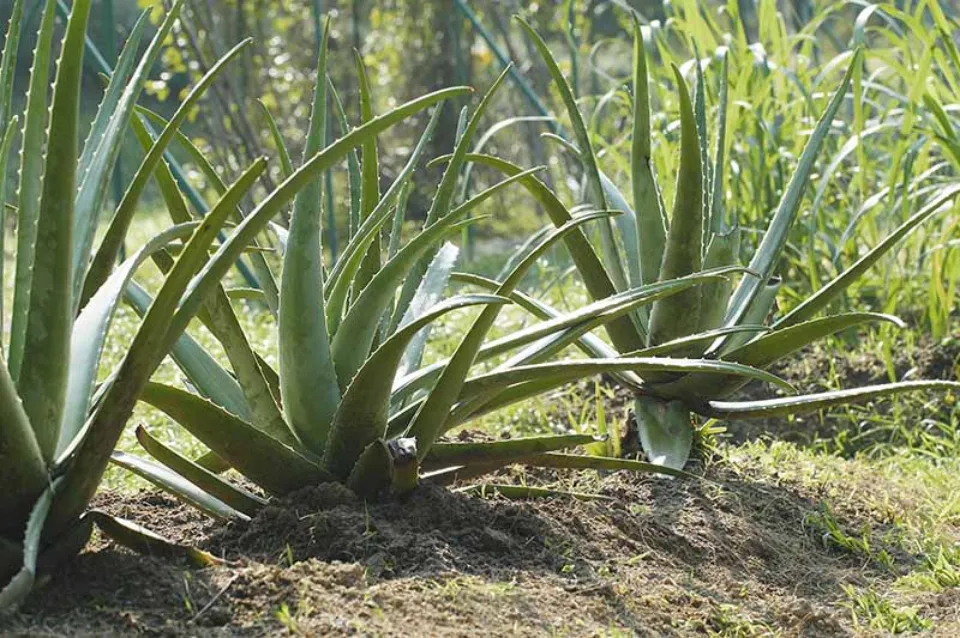
Poor Drainage
It is imperative Aloe Vera have a well draining potting mix. You have the option of making your own cactus and succulent mix or purchasing one that is already made. Whichever you decide, the soil should be divided into two thirds inorganic matter and one third organic matter.
The required pore space within the soil will be provided by inorganic matter such as pumice, sand, perlite, or turface. Without it, the potting mix will start to collapse, and when watered, there won’t be any air pockets for the plant roots to survive and function properly.
Too Much Fertilizer
In terms of fertilizer, aloe vera plants don’t require much. When chemical salts accumulate in the soil due to an excess of fertilizer, the roots will become burned. As the leaves start to brown, the damage to the roots will become visible.
- Flush the Soil and Fertilize Aloe Plants Sparingly
If you soak the ground to wash some of the fertilizer away, you can save your aloe plant. Place your potted aloe plant outside or in a sink, and thoroughly flush the soil there for a few minutes.
Let the extra water in the pot drain completely. This will wash away the fertilizer build up in the soil. Don’t water again until the soil completely dries out.
Don’t fertilize your aloe plant excessively. They simply don’t need it. Only fertilize once per year in the spring with half strength succulent fertilizer. You won’t need to fertilize your plant at all for a number of years if the fertilizer is already mixed into the potting soil.
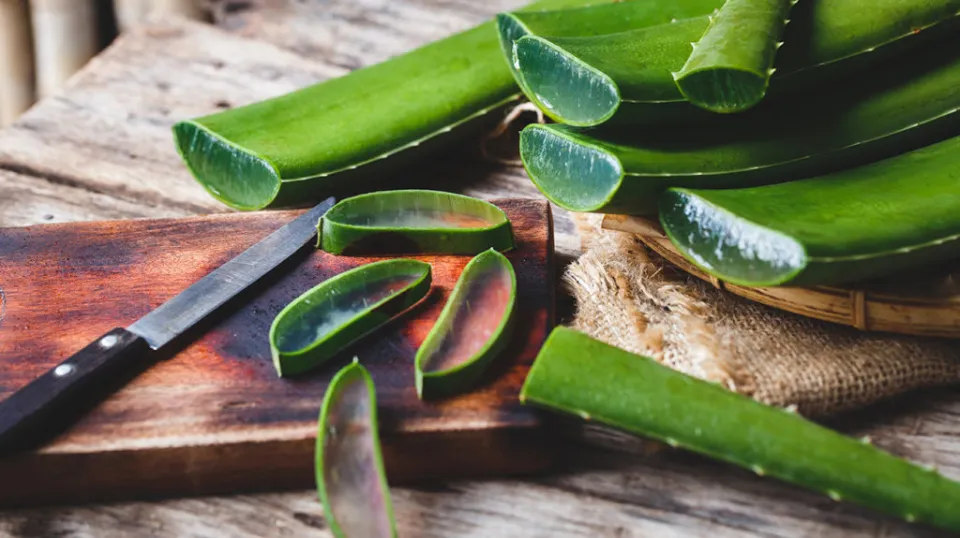
Transplant Shock
Most plants like to be left alone. You meet their bare necessities, and they take care of everything else. On occasion, we caregivers get the idea to repot or transfer our plants to a new home, without asking the plant what it wants. Aloe plant discoloration and general mushiness are signs of its unhappiness, which is then shown by the plant.
Repotting can be carried out in a way that minimizes transplant shock. Keep the roots as intact as possible by only removing dead or damaged ones with clean, sanitized tools. Use a pot that is one size larger than the previous container, along with potting soil for cacti and succulents. Place it back in its original location after giving it a thorough watering.
Frost Damage
It’s important to bring your plant back inside as soon as the weather turns too cold when you take it outside in the summer. When the temperature falls below 50°F, aloe vera does not grow well.
Low temperatures can cause tissue damage, which is frequently manifested as mushy, soft leaves that appear somewhat clear or translucent. If you’ve ever had produce like lettuce freeze accidentally in the refrigerator, the symptoms of frost damage look very similar.
Your aloe plant can probably be saved if the frost damage only happened once. The root system shouldn’t have been harmed and will be able to produce new leaves again over time..
It is possible for your aloe to get frost damage indoors as well. Your aloe plant may suffer tissue damage in the winter if it is placed too close to a window or a frequently used exterior door.
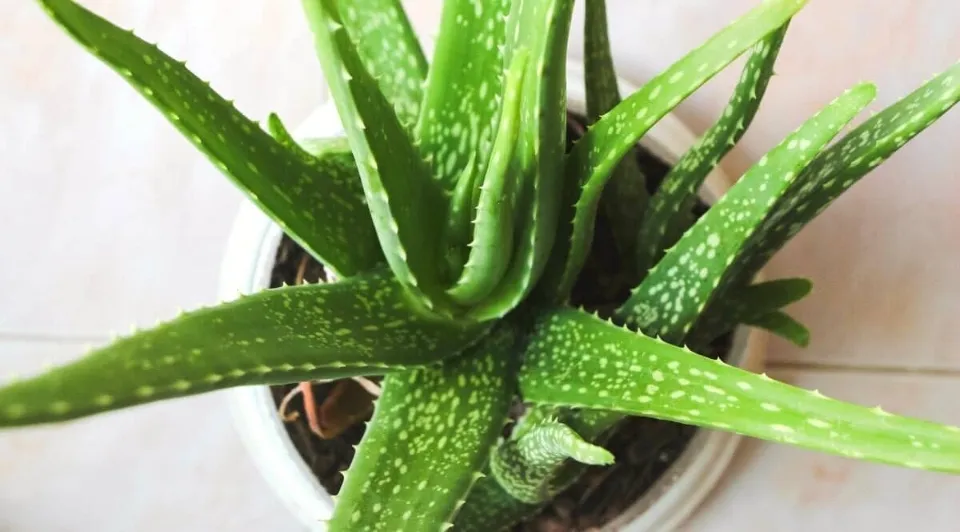
FAQs
Should I Cut the Brown Off My Aloe?
Cut off and discard soft, discolored leaves because they are ideal for fungus growth. The most common reasons for brown leaves on Aloe vera: Growth: As younger leaves grow out, older ones must be removed.
Can Brown Aloe Turn Green Again?
Unfortunately, an Aloe leaf that is severely brown as a result of salt or chemicals usually has to be removed. This is because it will not return to its original color. In these cases, it is preferable to remove the damaged leaves to encourage the growth of new, healthy leaves in their place.
How Do You Revive Browning Aloe?
Leach the soil with plenty of water or repot the plant. Exposure to chemicals may also be the cause of an aloe’s browning. Herbicide drift from wind may reach outdoor plants. Plants indoors may be splashed with cleaning chemicals.
How Often Should I Water An Aloe Plant?
Deep, but infrequent, watering is required for aloe vera plants. Allow the soil to dry at least 1 to 2 inches deep in between waterings to prevent rot. Don’t leave your plant submerged in water. Water about every 3 weeks and even more sparingly during the winter.
How Do You Know If Aloe Vera is Overwatered?
You’ll know your aloe plant is being overwatered when the leaves develop what are called water-soaked spots that look soggy and soft. It resembles the leaf absorbing so much water that it saturates every inch of it before disintegrating.
Summary: Why Your Aloe Plant is Turning Brown?
Aloe Vera is turning brown for many reasons. Finding the source of the browning and/or mushiness quickly enough to prevent extensive tissue damage is crucial.
Why your aloe plant is turning brown? Probably because of overwatering, underwatering, sudden environment changes, excessive heat, too cold, improper light exposure, disease, poor drainage, too much fertilizer, transplant shock, and frost damage.
Being able to identify the reason for the discoloration can be initially tricky. Pay attention to little details about how you maintain your aloe. How you go about watering and temperature fluctuations in the environment can have an impact on your plant. The location of the browning and any patterns should also be noted.
The simplest way to identify the root of a problem is occasionally through the process of elimination. You can properly care for your aloe plant as well as the rest of your plant collection by using the knowledge from the aforementioned information to identify the cause of browning and rot.
Read about
